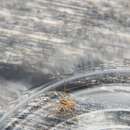en
names in breadcrumbs


Pardosa hyperborea is a species of wolf spiders in the family Lycosidae.[1][2] It is found in North America, Greenland, Europe, and Russia (European to Sibiria).[2][3]
Pardosa hyperborea is a species of wolf spiders in the family Lycosidae. It is found in North America, Greenland, Europe, and Russia (European to Sibiria).
Pardosa hyperborea is een spinnensoort uit de familie wolfspinnen Lycosidae. De soort komt voor in het Holarctisch gebied.
Bronnen, noten en/of referentiesPardosa hyperborea er en av edderkoppene i gruppen ulveedderkopper (Lycosidae). De jakter vanligvis på jordbunn, de spinner ikke fangstnett.
Pardosa hyperborea er registret forholdsvis få ganger, men fra nesten hele Norge, helt nord til Finnmark. Den finnes i høyereliggende strøk (fjell) i sør, mens den i nord kan finnes også i mer laverliggende strøk. Den mangler i Mellom-Europa, men finnes i Alpene og Nord-Amerika.
Pardosa hyperborea er lyst og litt mørkere brun eller brunsvarte, men uten tydelige lysere eller mørkere flekker på bakkroppen. Den har Pardosa-slektens typiske tegninger, med en lys midtlinje bakover forkroppen og den lyse avlange flekken på bakkroppen. Beina har ikke lyse og mørke ringer, men heller mer langsgående linjer eller flekker.
Mange av artene i slekten Pardosa er ganske lik hverandre og er variable i farge, selv om enkelte kan ha artstypiske flekker (mønster). For sikker artsbestemmelse kreves ofte nærmere undersøkelse av de kjønnsmodne edderkoppens genitalier, hos hunner epigynet og hos hanner pedipalpenes siste ledd.
Kroppen er todelt i en bakkropp (abdomen) og et hode-bryst parti (prosoma eller cephalothorax). Foran på hodet er det åtte øyne, hvorav de to midterste er langt større enn de andre.
Pardosa hyperborea lever på høyereliggende fuktige og åpne områder, som myrer med torvmoser, hellende enger med sigvann.
Slekten Pardosa er en gruppe som består av ca. 520 arter i verden.[1] I Norge er det registrert 22 arter[2].
Pardosa hyperborea er en av edderkoppene i gruppen ulveedderkopper (Lycosidae). De jakter vanligvis på jordbunn, de spinner ikke fangstnett.
Pardosa hyperborea[1] este o specie de păianjeni din genul Pardosa, familia Lycosidae. A fost descrisă pentru prima dată de Tord Tamerlan Teodor Thorell în anul 1872.[2][3] Conform Catalogue of Life specia Pardosa hyperborea nu are subspecii cunoscute.[2]
|access-date= (ajutor)Mentenanță CS1: Nume multiple: lista autorilor (link) Pardosa hyperborea este o specie de păianjeni din genul Pardosa, familia Lycosidae. A fost descrisă pentru prima dată de Tord Tamerlan Teodor Thorell în anul 1872. Conform Catalogue of Life specia Pardosa hyperborea nu are subspecii cunoscute.
Pardosa hyperborea là một loài nhện trong họ Lycosidae. Loài này phân bố ở miền Toàn bắc.